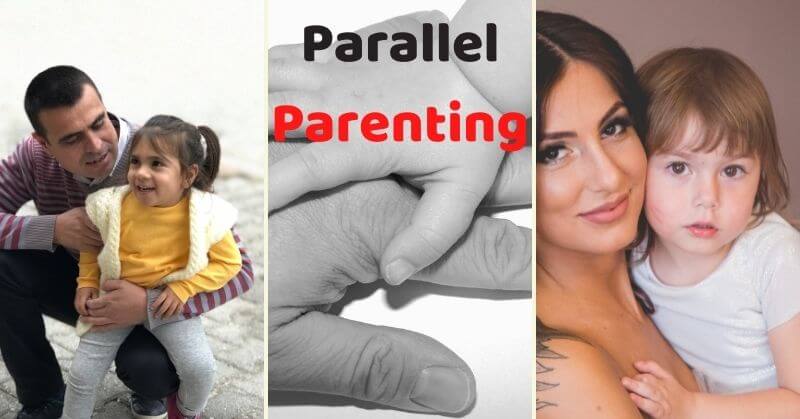Welcome back to Tinydale to another episode of Best-Case Parenting. Every day, it seems like new parenting approaches emerge!! Or, to put it another way, people are finally naming parenting styles that have been there for a while. We are going to talk about parallel parenting today. Continue reading if you have ever wondered what parallel type of parenting is all about……
Divorced spouses frequently face the challenge of wanting to be active in their children’s lives but find it difficult to collaborate, especially when it comes to defining healthy co-parenting limits. While many divorced spouses aspire to have a successful co-parenting relationship, is not always attainable, especially when the divorce is new.
This brought the concept of Parallel Parenting. But before going ahead with this just take an eye on Co-parenting approach.
Follow Us: Facebook | Instagram | Twitter | Youtube | Pinterest
Tinydale is on YouTube, Click here to subscribe for the latest videos and updates.
What is Co-Parenting?
Co-parenting refers to the combined parenting of children by non-married or separated parents or parental figures. They are not in a romantic relationship with each other. Another name for Co-parenting is joint parenting
Co-parents collaborate not just on the day-to-day care of their children, but also on key life decisions such as schooling, medical attention, religious education, etc.
What is Parallel Parenting?
It is a parenting method that allows each parent to be involved in their children’s lives while remaining separate from their ex- spouse’s.
To avoid conflict, parallel parents limit in-person interaction with one another as much as possible. In most cases, a strategy is set in place for how parents will address various scenarios. Aside from that, face-to-face contact is severely constrained.
So, how do you know if parallel parenting is the way to go for you? Here are a few scenarios and signals that this kind of parenting may be beneficial to you.
· Communication is a problem
· Too many people were involved
· The relationship was toxic.
Parallel Parenting vs Co-Parenting
While the terms co-parenting and parallel parenting both refer to cooperating with an ex to take care of your children together, they are not synonymous.
- Parallel type of parenting differs from co-parenting in many ways, but it can eventually lead to a strong co-parenting relationship. The following are some of the differences between the two parenting styles:
- Celebrating important occasions and holidays together is not part of parallel parenting. For holidays and birthdays, children usually alternate between their parents.
- In many cases, parents that practice parallel parenting does not implement the same parenting style at home. The other parent is not involved in day-to-day parenting decisions.
- Parallel parents frequently communicate through a third party, such as a co-parenting app or a parenting journal, because face-to-face time is limited.
- Simply said, parallel parenting refers to a decision to parent your child together while not interacting openly regularly. Co-parenting brings communication back into the equation.
Top 5 Benefits of being a Parallel Parenting
- This parenting can help in a variety of ways when a family is experiencing a lot of conflict after a divorce.
- It is crucial to have great ties with your children as a parent. Without giving one parent more control. Parallel parenting allows each parent to be actively involved in their children’s lives.
- With this parenting approach, children are exposed to less tension between their parents because exes have less contact with one another. This is especially beneficial for children who may be blaming themselves for the divorce.
- Spending a lot of time in person with your ex can be scary and anxiety-inducing, especially if there is a lot of hatred between you and you are former. Parallel parenting lowers in-person connection, giving parents more time to focus on themselves and their children rather than worrying about the next dispute with their ex.
- This parenting, like other parenting approaches such as conscious parenting, can assist in refocusing attention on the needs of the children involved. This approach of parenting has a significant advantage because children might suffer considerably as a result of divorce.
How to create a Parallel Parenting Plan?
A co-parenting plan may allow for some flexibility, but a parallel type of parenting plan is simple and precise to minimize communication between parents. Step by Step is as follows:
Consider going via the family court to make any arrangements formal to avoid complications.
- Step 1:
- Plan how you will divide your time with the kids.
- Step 2:
- Determine the start and end times for each visit.
- Step 3:
- Determine the pick-up and drop-off locations.
- Step 4:
- Plan how you will deal with cancellations.
- Step 5:
- Make a strategy for resolving conflicts.
The disadvantage of Parallel parenting
While this parenting approach has some advantages, it also has some disadvantages.
· This is a style that is not for everyone. Like most parenting methods, a parallel type of parenting is not a “one-size-fits-all” solution for every divorced couple. Every family should think about it and choose whether it is the best decision for them.
· Parallel parenting is not necessarily a good idea in the long run. Typically, it is utilized to enable the dust to settle between the divorce and the divorced couple’s reunion — whatever that looks like for them.
Have you ever considered this kind of parenting? What do you find appealing about it? Leave a comment to share your experience!
Also Read: Top 10 Things that Child Should Hear from Parents

